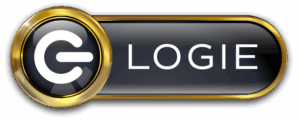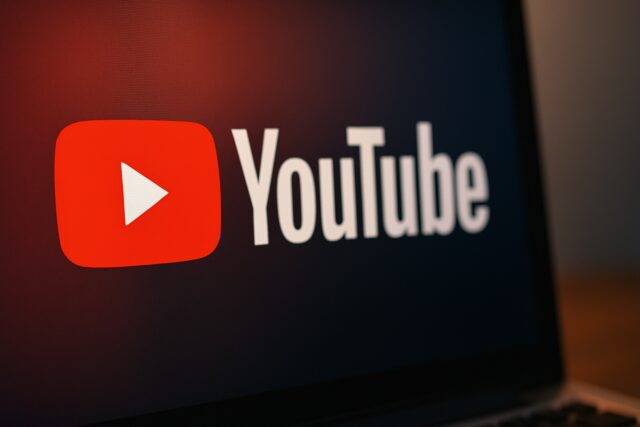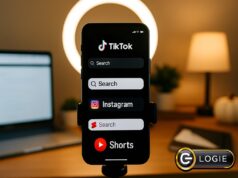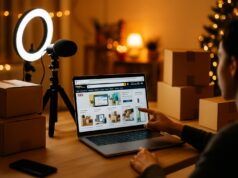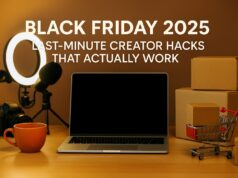If you’ve ever watched a YouTube Short rack up thousands of views only to see zero affiliate sales, you know the frustration.
In 2025, YouTube’s Affiliate Shopping program, now linking creators to over 2,500 retailers (yes, even Etsy), is rewriting the monetization playbook.
But there’s a catch: Shorts still block clickable links in descriptions and pinned comments. That’s a deal-breaker… unless you adapt.
By the way, if you want to stay connected and know everything about social commerce and never miss a beat, join Logie today! Click here
Top creators like Ileane Smith are proving that with the right mix of product stickers, long-form “shop hubs,” QR codes, and clear CTAs, you can turn Shorts into a reliable sales machine. Here’s your complete, step-by-step guide.
1. Why This Matters Now
YouTube is no longer “just a video platform”; shopping is now a core part of its DNA. The Affiliate Shopping program lets creators earn commissions from tagged products in both Shorts and long-form videos.
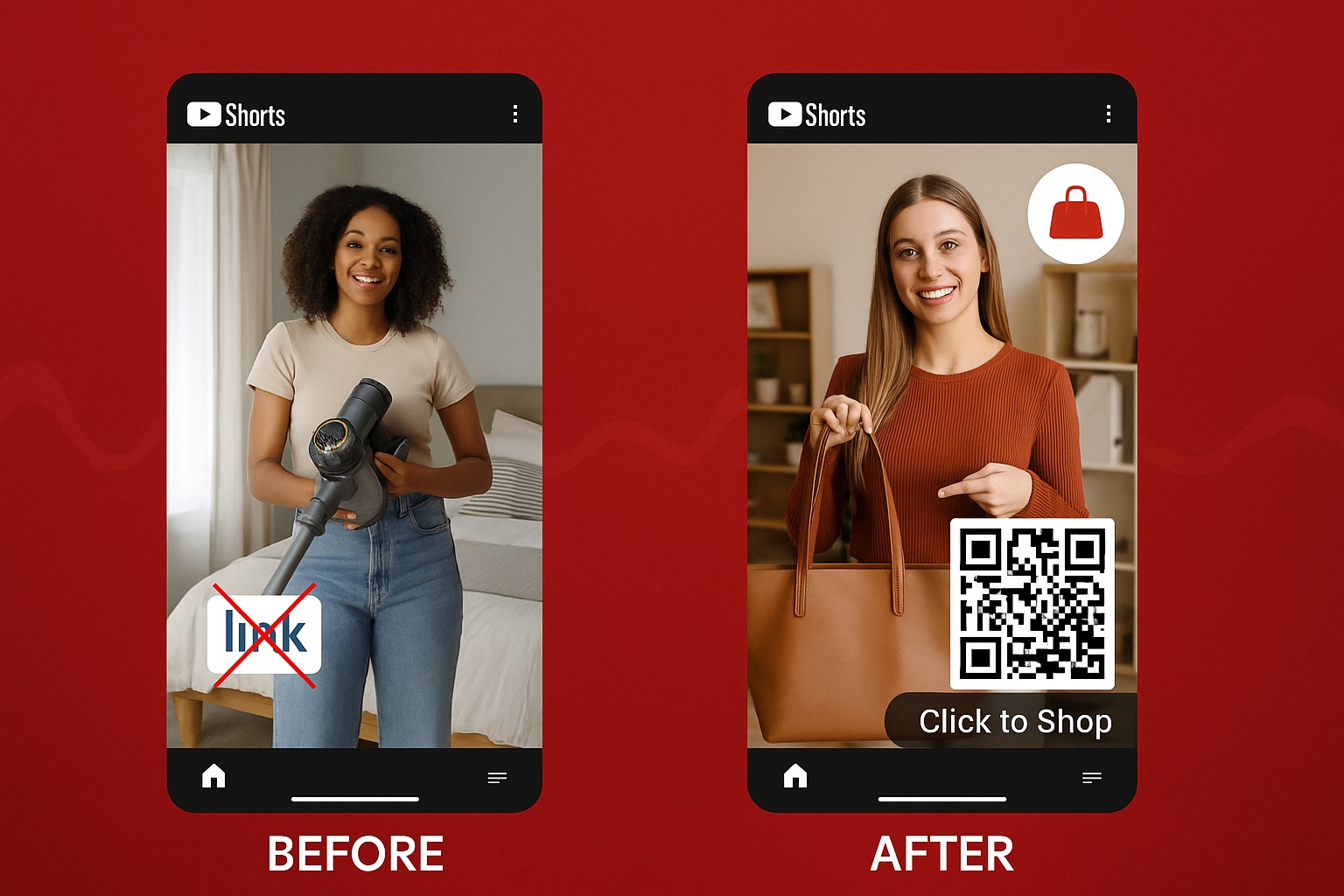
With over 2,500 retailers on board from global brands to indie makers, your audience can literally shop your recommendations without leaving the app.
For brands, this means influencer campaigns on YouTube now compete directly with TikTok Shop and Instagram product tags.
For creators, it’s a monetization opportunity that rewards those who can blend reach (Shorts) with conversion (clickable shopping surfaces elsewhere).
2. Timeline: How We Got Here
YouTube’s journey into integrated e-commerce hasn’t been an overnight shift; it’s been a series of deliberate moves aimed at making the platform a serious shopping destination. Here’s how it unfolded:
July 19, 2022; Shopify Integration Launched
YouTube partnered with Shopify, enabling creators and merchants to connect their stores directly to their channels.
This allowed products to appear in videos, live streams, and a dedicated Store tab, marking YouTube’s first big step into integrated e-commerce.
August 31, 2023; Clickable Links Removed from Shorts
YouTube removed clickable URLs from Shorts descriptions and pinned comments in an effort to combat spam and unsafe links.
The change disrupted established traffic funnels, forcing creators to find new ways to guide viewers toward products. This led to the wider adoption of product stickers and alternative linking strategies.
April 9, 2024; Affiliate Hub Launched
YouTube introduced the Affiliate Hub inside YouTube Studio, giving creators a central place to discover partner brands, view commission rates, request samples, and access promotional codes.
This signaled YouTube’s intent to formalize and expand its in-platform affiliate ecosystem.
Late 2024; Program Expanded Globally
YouTube Shopping expanded to new regions, adding Coupang in Korea, Shopee in Southeast Asia (starting with Indonesia), and Flipkart/Myntra in India.
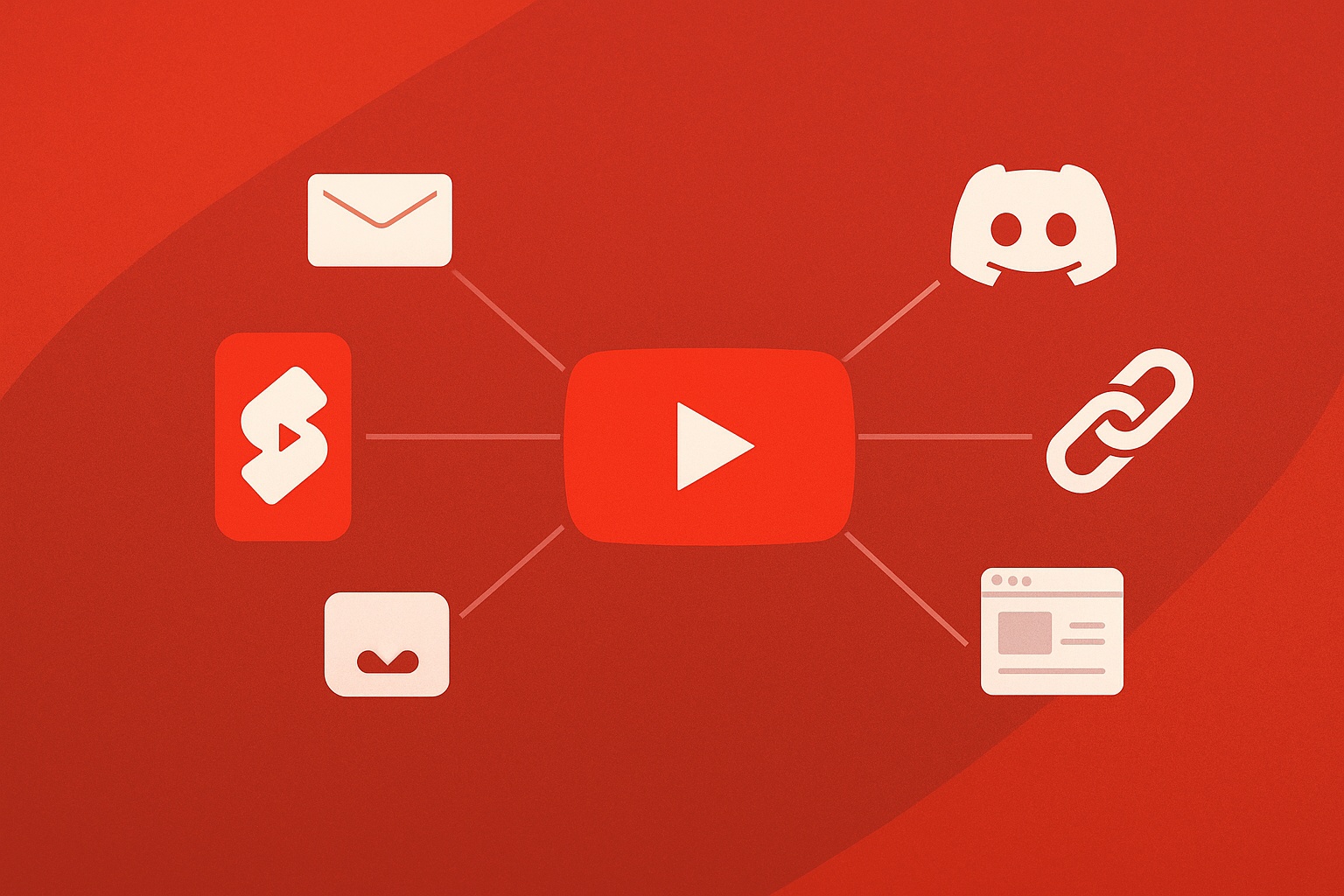
The move broadened the program’s global footprint and positioned YouTube as a stronger competitor in the social commerce space.
2025; Focus Shifted to Stickers, QR Codes & Cross-Device Shopping
In 2025, YouTube concentrated on refining the shopping experience. Product stickers in Shorts became the primary clickable element for in-video shopping, QR codes bridged mobile and TV experiences, and cross-device integration made shopping more seamless for viewers.
3. Who’s Eligible (Creators & Brands)
Creators
- Must be in the YouTube Partner Program (YPP).
- At least 10K subscribers.
- Based in the US, Korea, Indonesia, Thailand, Vietnam, Malaysia, Philippines, India, or Singapore.
- Not a music/OAC channel, not “Made for Kids.”
If you’re under 10K subs: Focus on hitting YPP’s Shorts criteria (3M views in 90 days) to unlock monetization.
Brands
- Must be on Shopify Advanced/Plus (US) and connect via the Google & YouTube app.
- Set commission rates, manage offers, and stay stocked for creator campaigns.
- Appear in the Affiliate Hub where creators discover you.
4. The Shorts ‘No Link’ Wall and Why It’s a Big Deal
When Shorts blew up, creators embraced them for their massive reach. But unlike TikTok (where clickable in-video links are common), YouTube blocks most clickable links in Shorts. That means:
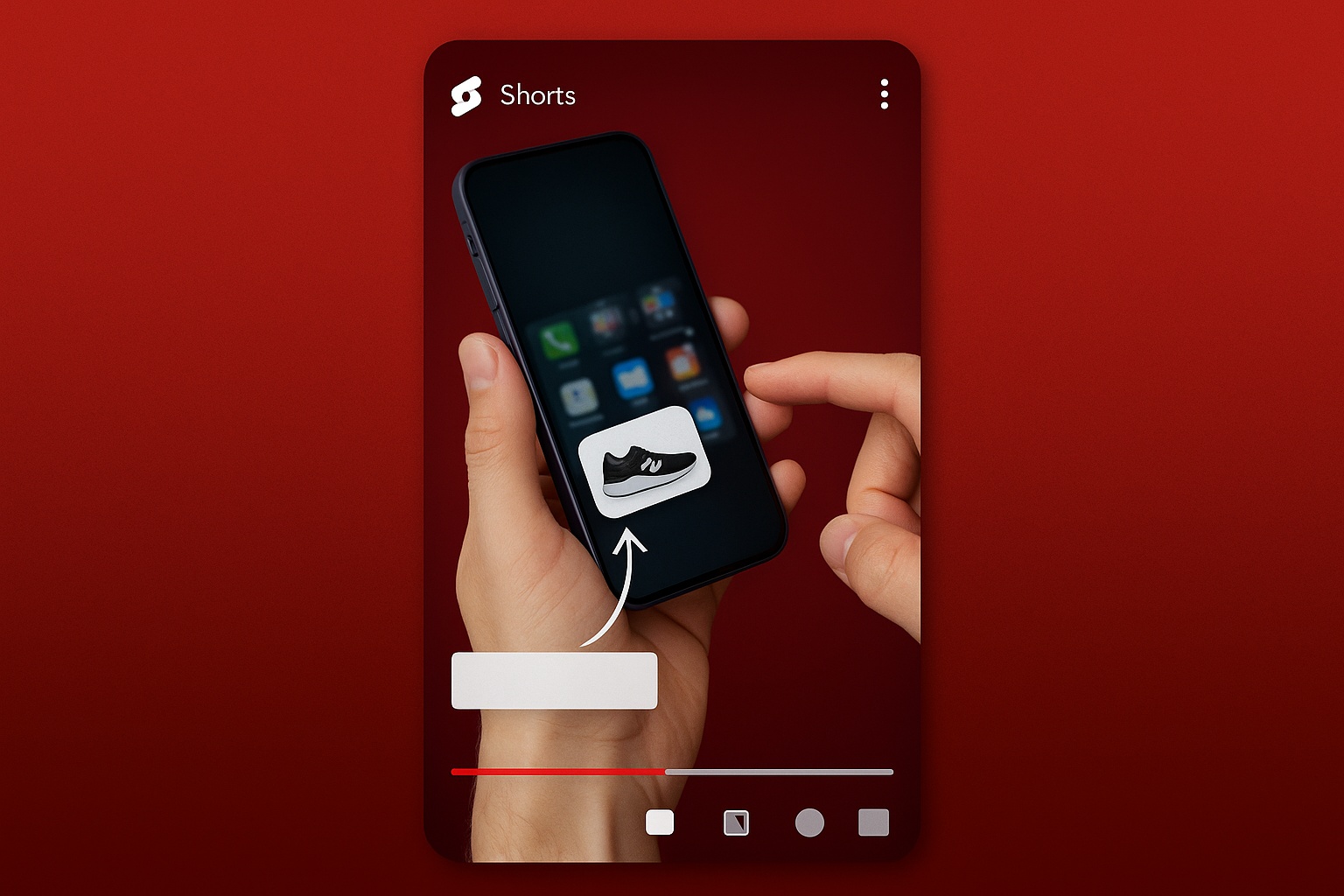
- Fans can’t just click your description or pinned comment.
- Funnels break unless you intentionally bridge the gap.
As Ileane Smith puts it:
“You have to educate people… you have to tell them in your video how to
shop… Some people are still like, ‘I can shop from YouTube?’ They don’t even know!”
In 2025, the winning creators are educators and entertainers.
5. Creator Playbook, Step-by-Step
1) Educate on-camera
Say it plainly: “Tap the product sticker to shop. Full links are in my long-form review on my channel.” Repeat in every video.
2) Make Long-Form Your ‘Shop Hub’
Shorts = discovery, Long-form = conversion. Use long videos for detailed demos, clickable links, and higher-value purchases.
Logie data: Creators using “Watch the full review for direct links” CTAs see higher click-through rates.
3) Embrace QR Codes
Overlay QR codes on Shorts pointing to your shop, Logie landing page, or a curated product list. Internal data shows QR scanning doubled in 2025 among mobile shoppers.
4) Pin Creative Comments & Featured Videos
Guide viewers to playlists, tutorials, or “Shop With Me” content. Update your channel’s featured video to explain how to shop your channel.
5) Build Your Own Funnel
Don’t rely solely on YouTube’s tech. Use Linktree, Beacons, or Logie shoppable pages, along with your own vanity domain. Promote it everywhere: Short captions, channel banner, bio.
6) Train the Modern Shopper
Even digital natives don’t always realize YouTube is shoppable. Use pointing gestures, pop-up graphics, and repetition to make it second nature.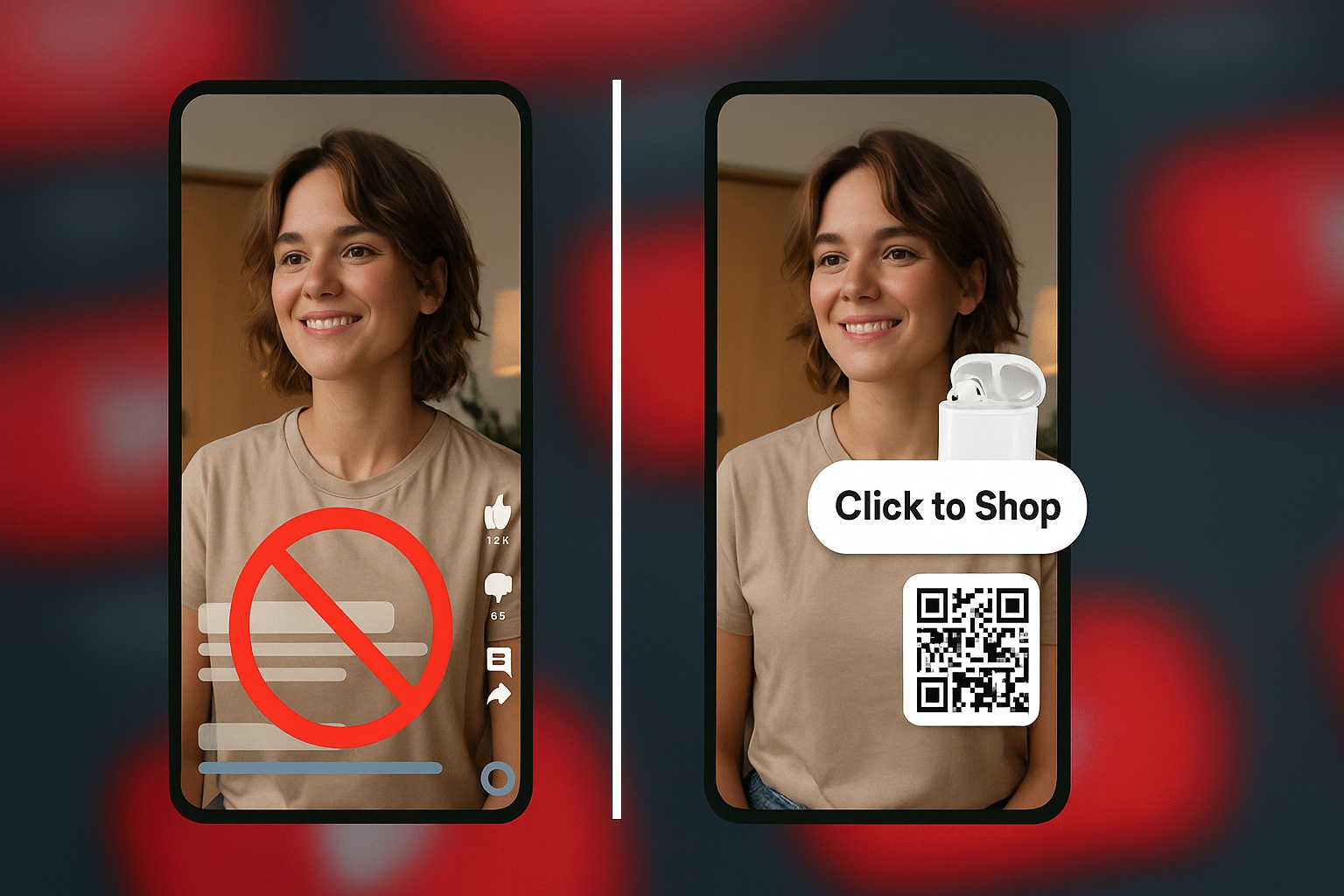
6. Brand Playbook, Step-by-Step
1) Onboard to the Program
Connect via Shopify, set competitive commissions (5–15%), and push products to the Affiliate Hub.
2) Be Discoverable
Publish seasonal promos and ensure creators can request samples.
3) Educate Your Creators
Explain the limitations of Shorts links and encourage dual-format campaigns (Short + long-form).
4) Target Eligible Creators
Focus on those in supported regions who already produce shoppable content.
5) Watch for Attribution Issues
Coupon extensions and last-click attribution can steal credit from affiliates plan accordingly.
7. Device & Region Gotchas
- Mobile-first experience: Shopping stickers shine on mobile; smart TVs & consoles often don’t display them. Use QR codes for these viewers.
- Regional product availability: Not every retailer ships to every region. Double-check before tagging.
8. Pro Takeaways for 2025
Creators: Blend Shorts discovery with long-form conversion. Layer QR codes, creative CTAs, and link aggregators. Own your audience with email, Discord, or Telegram.
Brands: Partner with creators who understand the funnel. Offer competitive commissions and promo codes, and support them with creative assets.
Conclusion
YouTube is quietly but steadily laying the foundation for what could become the world’s most influential shoppable video ecosystem, but the blueprint doesn’t follow the obvious playbook.
This involves mastering the platform’s unique tools, understanding audience behavior, and designing shopping experiences that feel native to YouTube.
In 2025, the creators who rise to the top will be the ones who educate as much as they entertain, guiding viewers through product stickers, QR codes, and long-form “shop hubs” with clarity and confidence.
Brands that win here will partner with these educators, providing them with competitive offers, creative freedom, and the resources to build trust at scale.
The next generation of social shoppers is already here. The question is: will you simply post content, or will you train, inspire, and convert them?
